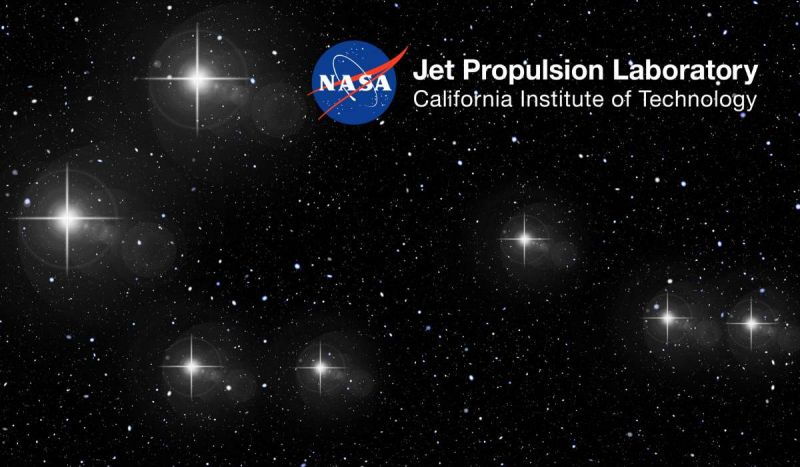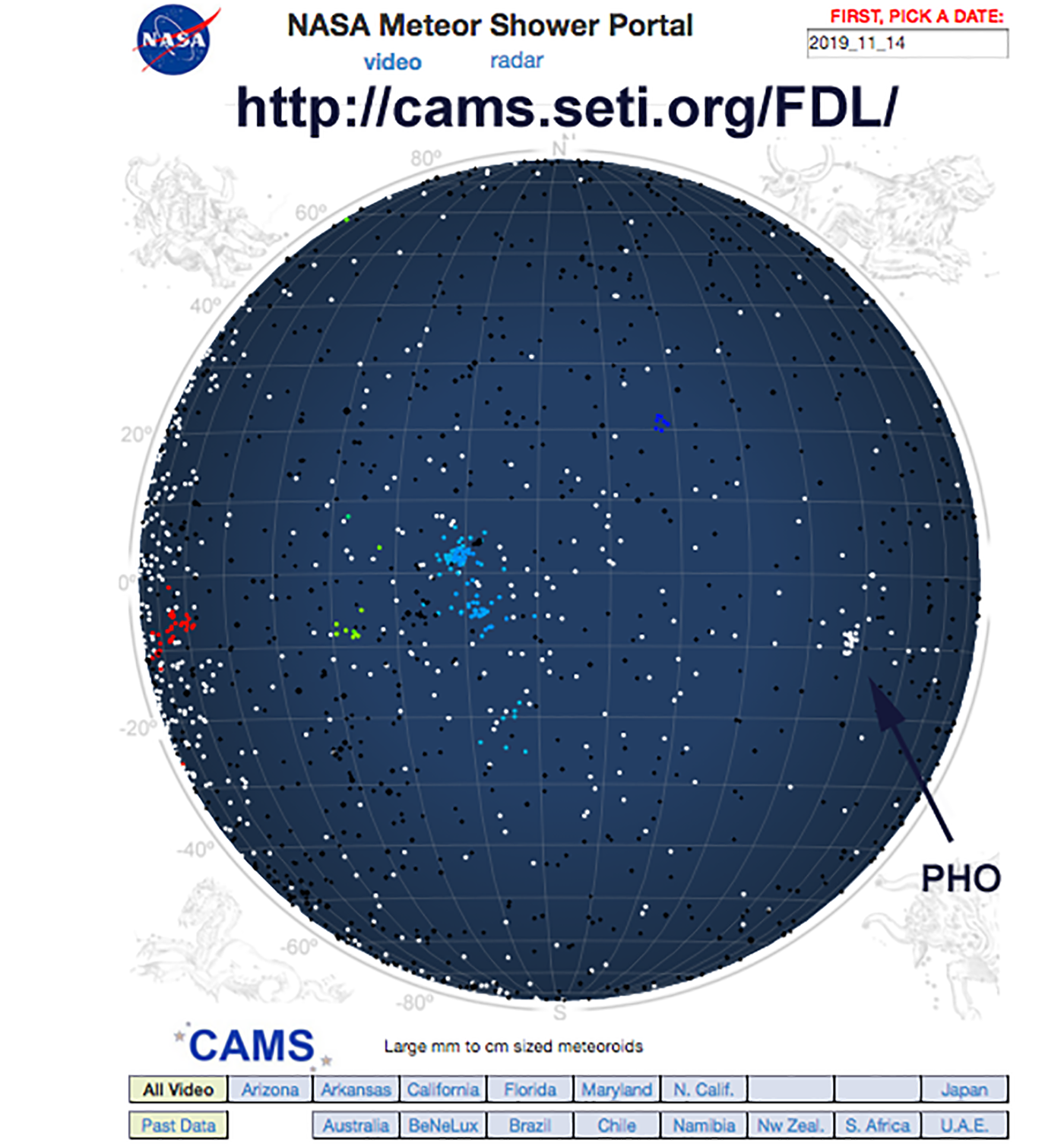
Scientists were hoping for an exceptional meteor shower with the return of the alpha Monocerotid meteor shower last week (IAU shower 246, AMO). Peter Jenniskens, a senior research scientist at the SETI Institute, and his colleague Esko Lyytinen, Helsinki, Finland, reported the possibility of a significant event on November 22 that would have been visible in eastern areas of the United States and southern America.
Weather in the United States did not cooperate for optimal viewing; however, cameras in Brazil detected the outburst.

Peter currently runs the NASA sponsored Cameras for Allsky Meteor Surveillance (CAMS) project in northern California, which aims to confirm some of the 300+ meteor showers in the IAU Working List that need confirmation. Sixty video security cameras film the skies over the San Francisco Bay Area.
- SETI.org: Meteor Shower Outburst Alert
- SETI.org: Exceptional Meteor Shower
- CAMS.seti.org: Latest news
- GeekWire: NASA says much-anticipated meteor outburst could be a bust for the West Coast
- NY PIX 11: Look up this week! Mysterious comet causes rare “Unicorn” meteor shower: How to watch
- Phys.org: Possible meteor outburst this week worth a look up
- Travel+Leisure: A ‘Unicorn’ Meteor Storm May Be on Its Way This Week – Here’s Where You Can See It
 Frontier Development Lab (FDL)
Frontier Development Lab (FDL)Could the same computer algorithms that teach autonomous cars to drive safely help identify nearby asteroids or discover life in the universe? NASA scientists are trying to figure that out by partnering with pioneers in artificial intelligence (AI) to apply advanced computer algorithms to problems in space science.
NASA FDL is an applied artificial intelligence research accelerator located in Silicon Valley. FDL is a public-private partnership between space agencies, the SETI Institute and leaders in commercial AI, including Google Cloud, Intel, IBM, HPE, Kx, Element AI and NVIDIA and in space, such as Lockheed Martin, the United States Geological Survey, the Canadian Space Agency, and Luxembourg Space Agency.
Now in its fifth year, FDL has established an impressive success rate for research output over accelerated time periods. Research outcomes are regularly accepted to respected journals and scientific conferences in both AI and space science domains.
- NASA.gov: NASA Takes a Cue From Silicon Valley to Hatch Artificial Intelligence Technologies
- FrontierDevelopmentLab.org: Latest News
- SETI.org: Frontier Development Lab
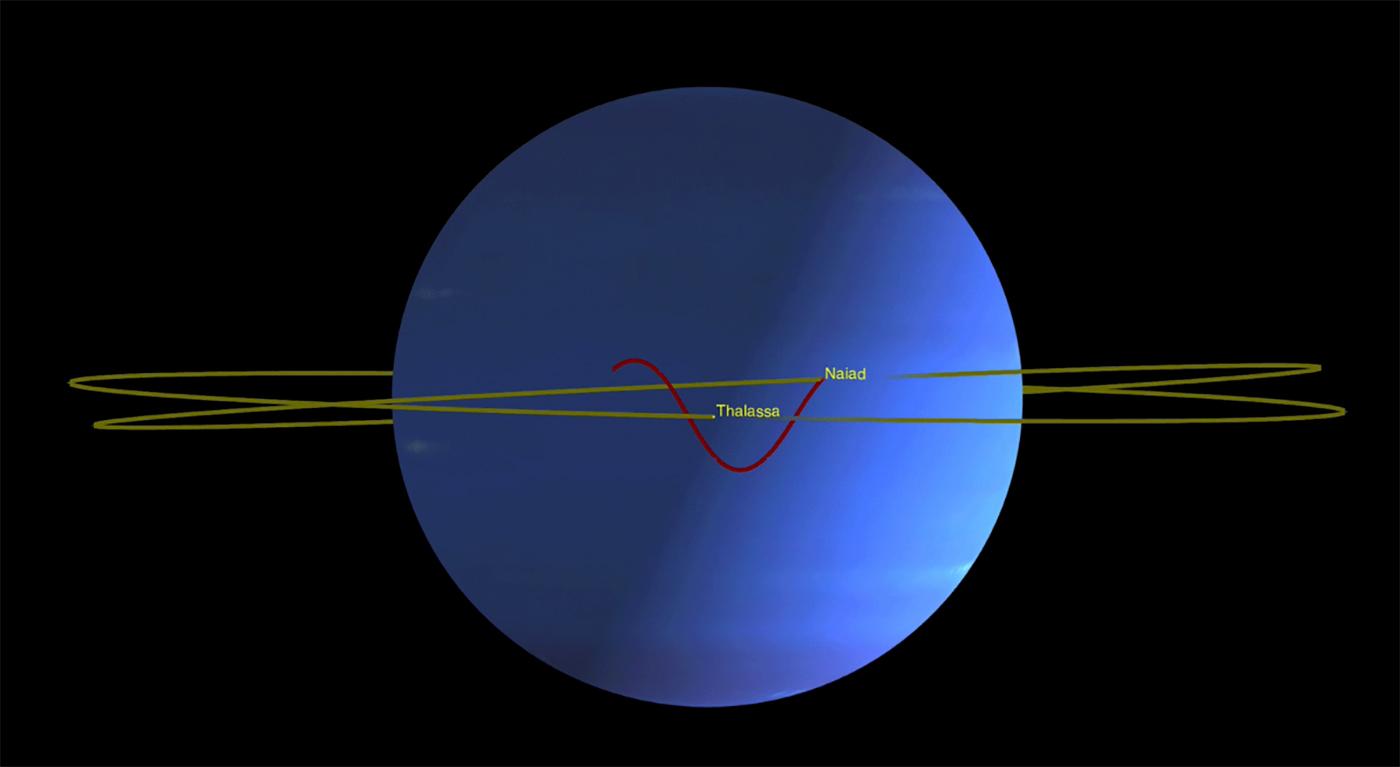 Neptune Moons
Neptune MoonsEven by the wild standards of the outer Solar System, the strange orbits that carry Neptune's two innermost moons are unprecedented, according to newly published research.
Orbital dynamics experts are calling it a "dance of avoidance" performed by the tiny moons Naiad and Thalassa. The two are true partners, orbiting only about 1,150 miles (1,850 kilometers) apart. But they never get that close to each other; Naiad's orbit is tilted and perfectly timed. Every time it passes the slower-moving Thalassa, the two are about 2,200 miles (3,540 kilometers) apart.
“We are always excited to find these co-dependencies between moons," said Mark Showalter, a planetary astronomer at the SETI Institute, and a co-author of the new paper. "Naiad and Thalassa have probably been locked together in this configuration for a very long time, because it makes their orbits more stable. They maintain the peace by never getting too close."
- SETI.org: NASA Finds Neptune’s Moons Locked in ‘Dance of Avoidance’
- CNN: Neptune’s moons perform a strange orbit dance around each other
- Newsweek: NASA Discovers Never Before Seen ‘Dance of Avoidance’ of Neptune’s Moons Naiad and Thalassa
- Salon.com: Neptune’s moons tiptoe around each other to avoid collision
- Digital Trends: Neptune’s moons twirl around each other in an unprecedented dance
- Universe Today: Two of Neptune’s Moons Dance Around Each Other as They Orbit
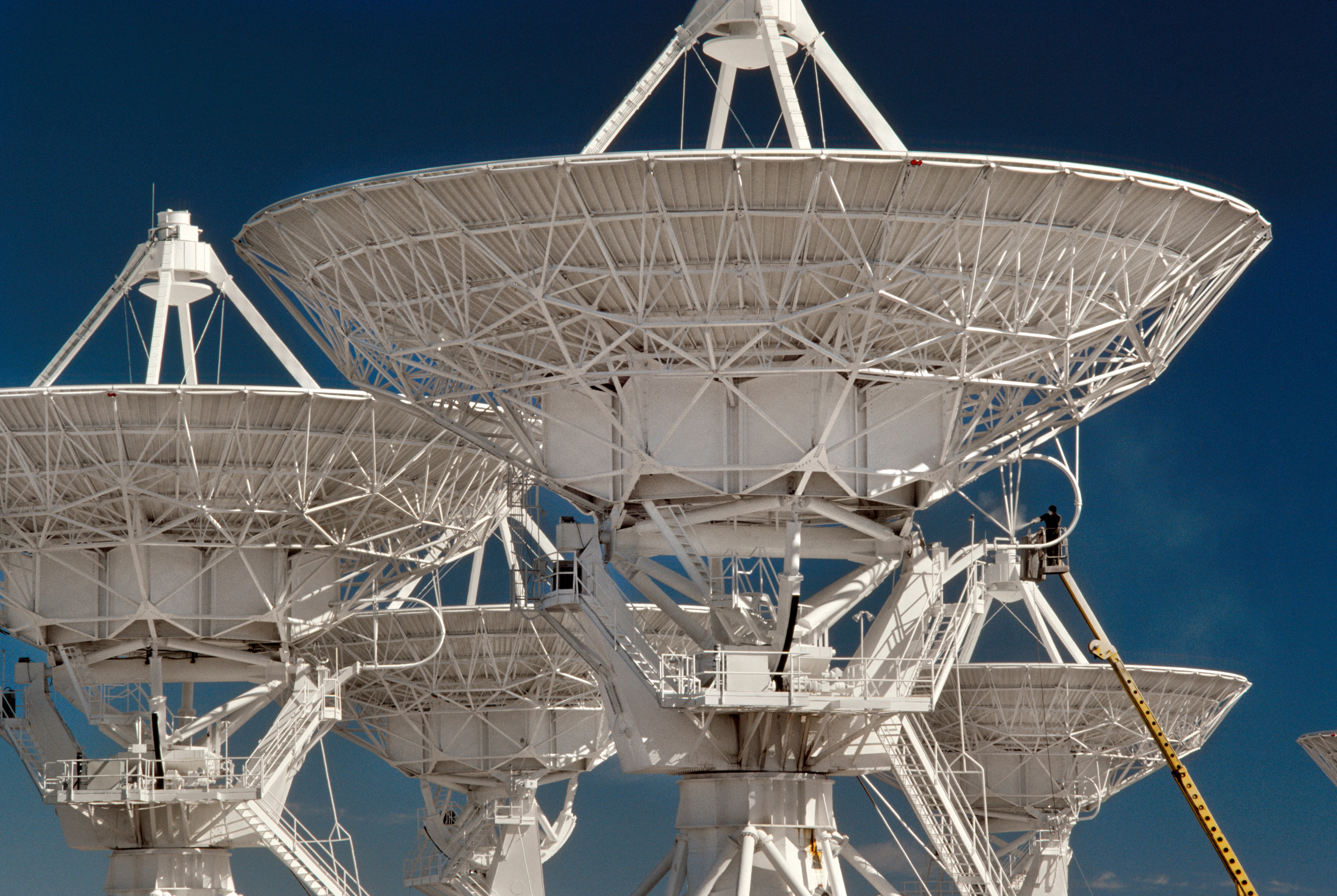 First SETI Grad Program
First SETI Grad ProgramJason Wright, the 2019 recipient of the SETI Institute's Drake Award, is working on launching the first graduate program, the Penn State Extraterrestrial Intelligence Center (PSETI). Although SETI as a scientific discipline has been around for about 60 years, it has not benefited from having an academic center until now. If all goes well, Wright hopes to dedicate PSETI at the first Penn State SETI Symposium in July.
Fostering the next generation of SETI researchers will be an important goal of the PSETI program.
- Scientific American: Space Alien Research Could Get Its First Grad Program
- SETI.org: SETI Institute Names Jason Wright as Recipient of the 2019 Drake Award
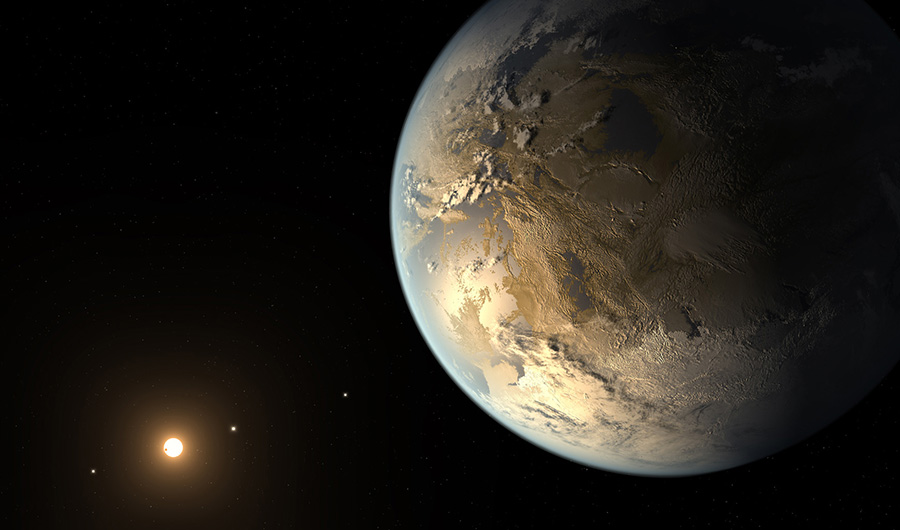 SETI Institute Turns 35
SETI Institute Turns 35On November 20, 2019, the SETI Institute turned 35. At its founding, the Institute had one project and one scientist, namely the NASA SETI program and its lead investigator, Jill Tarter.
Today, the Institute boasts 100 Ph.D. researchers and studies everything from the possibility of microbes on Mars to new techniques for uncovering advanced intelligence in star systems hundreds of light-years' distant. It also has a vigorous program of education and outreach.
- Inside Science: Thirty-Five Years on, the Search for Aliens Continues
 Weekly Space Hangout
Weekly Space HangoutOn November 20, Kathryn Bywaters, a research scientist at the SETI Institute, was a guest on Weekly Space Hangout, hosted by Fraser Cane. Kathryn is working on the development of life-detection instrumentation for future space exploration. Additionally, she is investigating the nutrient constraints microbes would have on Mars as well as performing experiments in Mars analog environments.
- Weekly Space Hangout: November 20, 2019
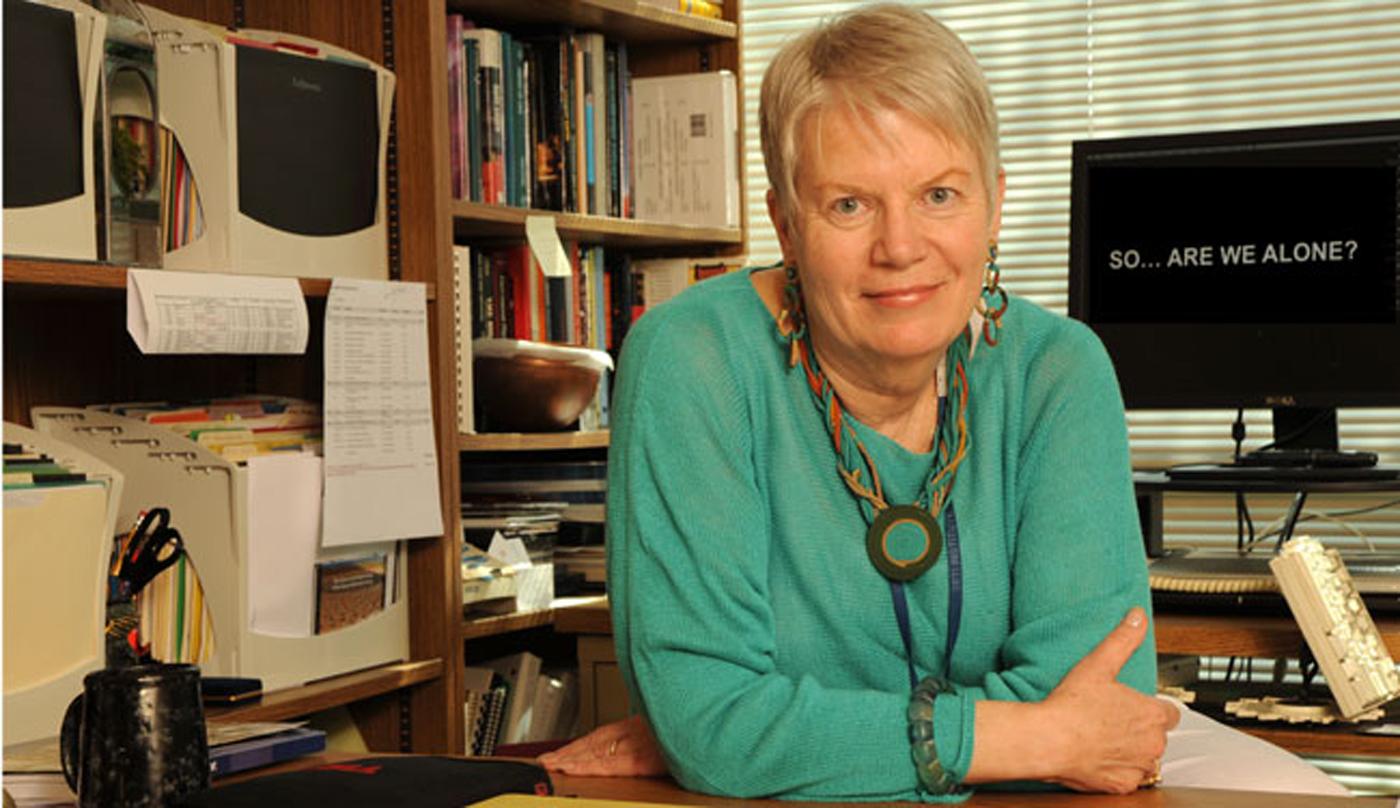 Primal Philosophy
Primal PhilosophyJill Tarter, a co-founder of the SETI Institute and Chair Emeritus for SETI at the SETI Institute, was recently a guest on the Primal Philosophy podcast.
Among her many achievements, Jill led Project Phoenix, a decade-long SETI study of about 750 nearby star systems, using telescopes in Australia, West Virginia, and Puerto Rico. While no extraterrestrial signal was found, this project was the most comprehensive targeted search for artificially generated cosmic signals ever undertaken.
- Primal Philosophy: #30 Jill Tarter
In last week’s episode, Stopping Ebola, a new vaccine may help turn Ebola into a disease we can prevent and a new drug may make it one we can cure.
Last time on Facebook Live, Simon Steel interviewed SETI Institute Senior Planetary Scientist Pascal Lee: Astronauts on the Moon and Mars: Getting Ready. Videos of all past Facebook Live events can are on our Facebook page: https://www.facebook.com/SETIInstitute/


